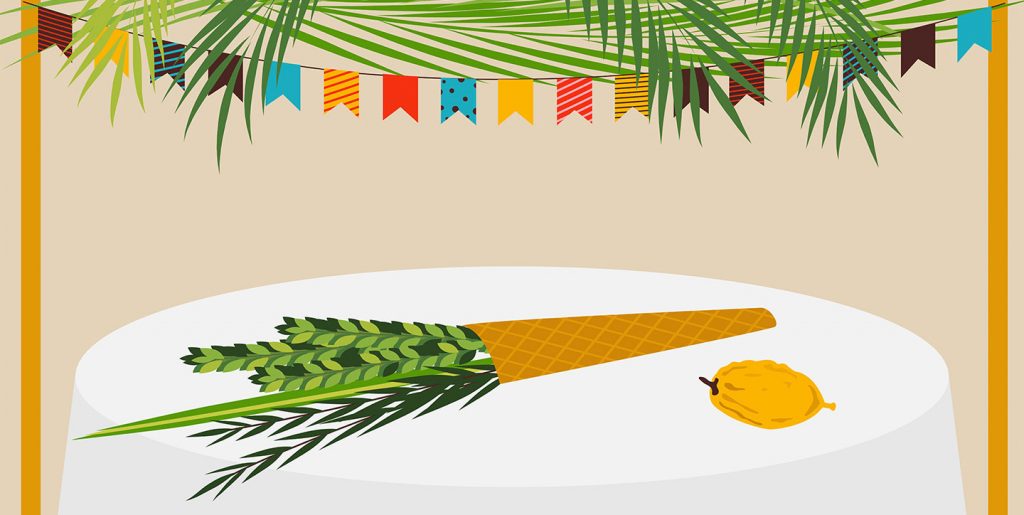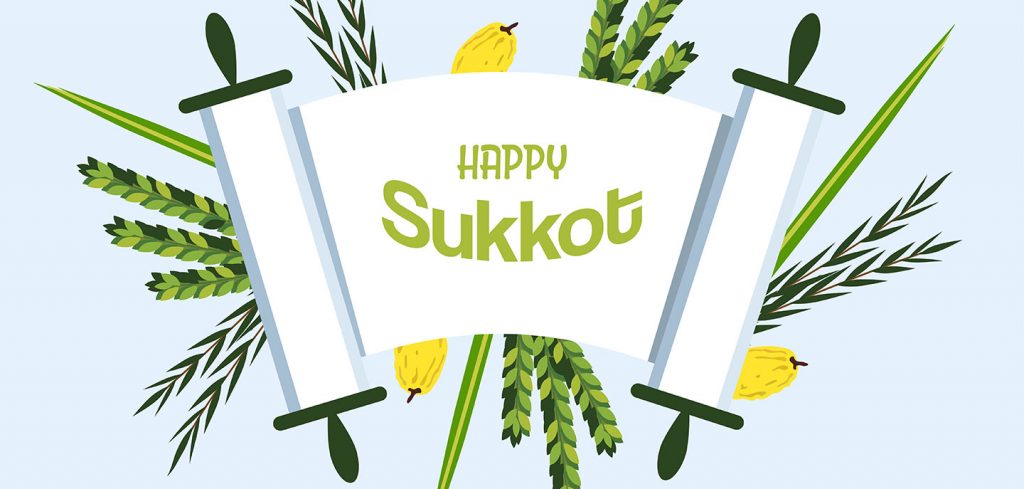
Sukkot
Sukkot, the Festival of Booths lasts for eight days, Also, known as The Festival, and The Season of Rejoicing, it is a time of much joy and blessing. Sukkot is one of the three pilgrimage festivals when Jews would make the journey to the Temple in Jerusalem bringing offerings, in this case from the fall harvest. The other two were Passover and Shavuot.
Sukkot has both historical and agricultural significance. In ancient days, when the Jews fled from slavery in Egypt, they made huts for shelter when they camped for the night in the wilderness. Later, when they settled in Canaan, the land of Israel, Jewish farmers built huts out of tree branches in their fields and lived in them to save time from going back and forth from the fields and their homes.
In commemoration of these events, the holiday is celebrated by the construction of a temporary structure called a sukkah, where Jews study, eat meals, and sometimes even sleep for during the holiday.
Sukkot reminds us that although we try to provide for our own security and safety, a certain instability cannot be avoided in life. We may have built permanent homes, but ultimately God is our shelter.
Ushpizin: Special Mystery Guests
A mystical tradition that is widely celebrated today on Sukkot is the invitation of patriarchs into the sukkah, one for each night. In more recent years, matriarch have been invited as well. By formally invoking their name and inviting their presence we hope to emulate the great qualities they possessed. The common list includes Abraham, Sara, Isaac, Rebecca, Jacob, Leah, Rachel, Joseph, Moses, Aaron King David, Miriam, Deborah, and Esther.
Arbah Minim: The Four Species
The four species are four different types of things that grow in the land of Israel: the etrog (citron), lulav (palm branch), hadas (myrtle), and aravah (willow). In the sukkah and during Sukkot worship services it is tradition to hold these together, wave them in all directions and march around the sanctuary, praising God.
There is much symbolism connected to the fours species. One is that each represents a different body part: citron-heart, myrtle-eyes, palm-spine, and willow-mouth. When we hold and wave these things together we recognize that we worship God with all our being and all our body.
Another interpretation is that each of the four species has different qualities in regards to taste and fragrance. This diversity symbolizes the diversity of the Jewish people and the need for all different types of Jews to form a strong community.
Shemini Atzeret and Simchat Torah
The eighth day of Sukkot is known as Shemini Azteret. Special services for people who have died are held and prayers are said for rain. These prayers have an important meaning in Israel, where fall rain is needed to yield a good spring harvest.
Simchat Torah is usually held on the ninth day. It marks the completion and beginning of the annual reading of the Torah. Torah scrolls are taken from the ark and people dance and parade seven times around the sanctuary in celebration. Children follow the procession, carrying flags, some with apples on top. The mood is one full of joy, merriment, song, and dance.

